Indie music collaborations enhance creativity and broaden audiences through diverse partnerships. This article explores notable collaborations, unique styles, and the outcomes that shape the indie music scene. Key examples include Sufjan Stevens and Angelo De Augustine, as well as Bon Iver and James Blake. Additionally, we will discuss the innovative genre-blending and challenges these collaborations often face.
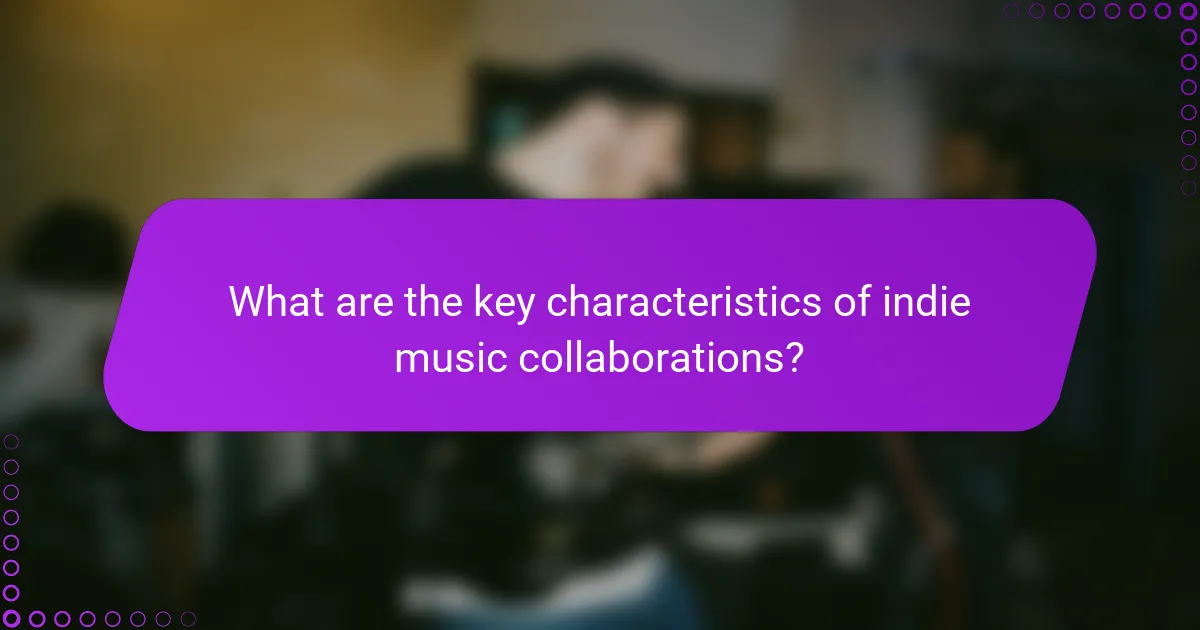
What are the key characteristics of indie music collaborations?
Indie music collaborations are characterized by creativity, diversity, and unique soundscapes. These partnerships often blend various genres, showcasing artists’ distinct styles. Notable collaborations, such as those between Bon Iver and Kanye West, highlight innovative approaches. Outcomes frequently include fresh musical experiences and expanded audiences, enhancing the indie music scene’s richness.
How do partnerships enhance creativity in indie music?
Partnerships enhance creativity in indie music by fostering collaboration and diverse influences. Collaborations often lead to innovative sounds and unique artistic expressions. Notable partnerships, such as those between artists from different genres, can result in fresh styles and broadened audiences. These interactions stimulate creative processes, allowing artists to explore new ideas and push boundaries. As a result, indie music thrives on collaboration, creating a rich tapestry of sounds and experiences.
Which genres commonly feature indie collaborations?
Indie music collaborations commonly feature genres like folk, rock, pop, electronic, hip-hop, and experimental. These genres often highlight unique partnerships that blend diverse styles, leading to innovative soundscapes. For example, indie rock frequently collaborates with electronic artists, creating fresh, hybrid sounds. Additionally, folk artists often join forces with pop musicians, resulting in catchy yet authentic tracks.
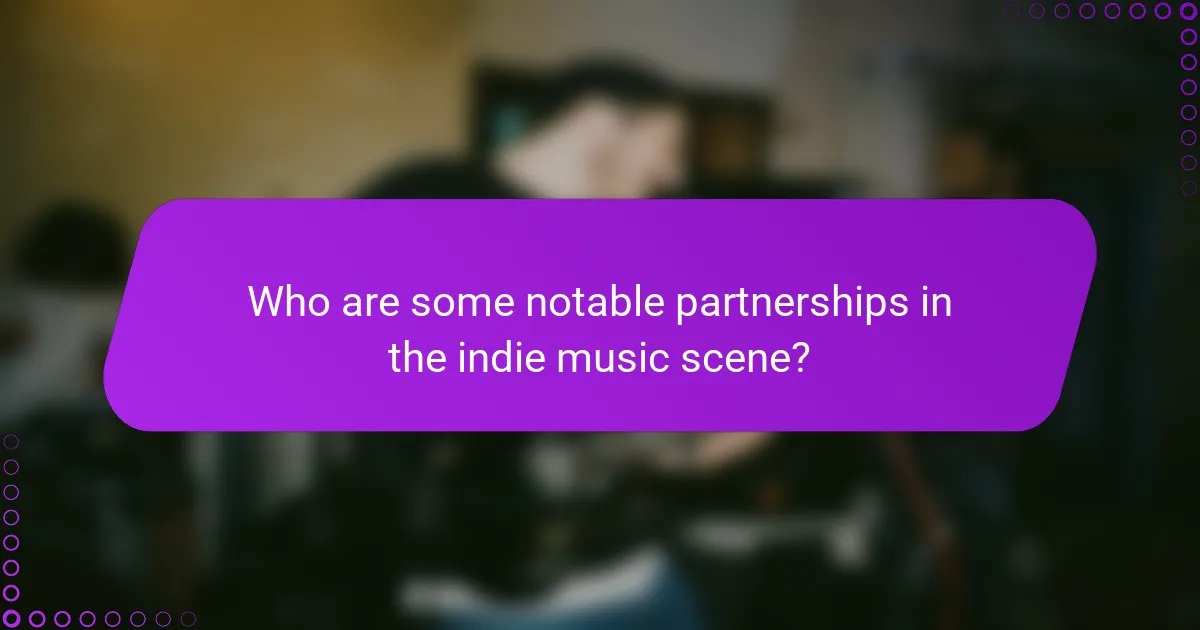
Who are some notable partnerships in the indie music scene?
Notable partnerships in the indie music scene include collaborations between artists that enhance creativity and broaden audiences. For example, Sufjan Stevens and Angelo De Augustine released “A Beginner’s Mind,” blending their unique styles. Another significant partnership is between Bon Iver and James Blake, which combines indie folk and electronic elements, resulting in innovative soundscapes. Additionally, the duo of Phoebe Bridgers and Conor Oberst, known as Better Oblivion Community Center, merges their lyrical prowess, creating impactful music. These collaborations illustrate the dynamic nature of indie music and its ability to evolve through partnerships.
What impact did The Postal Service have on collaborative indie projects?
The Postal Service significantly influenced collaborative indie projects by blending electronic and acoustic elements. Their unique sound inspired numerous artists to explore genre fusion. This collaboration model led to a surge in indie partnerships, fostering creativity and innovation. As a result, many artists adopted similar approaches, enhancing the indie music landscape.
How did Bon Iver and Kanye West’s collaboration redefine genre boundaries?
Bon Iver and Kanye West’s collaboration redefined genre boundaries by blending indie folk with hip-hop elements. This partnership showcased unique attributes of both artists, merging introspective lyrics with innovative production. The collaboration on tracks like “Lost in the World” highlighted a rare fusion of styles, expanding the listener’s experience. As a result, it encouraged further cross-genre collaborations within the music industry, influencing emerging artists to explore diverse sounds.
Which collaborations emerged from the indie music festival circuit?
Indie music festivals have fostered numerous collaborations, leading to unique partnerships and innovative styles. Notable examples include the collaboration between Bon Iver and James Blake, which blended folk and electronic music, and the partnership of Tame Impala and The Flaming Lips, merging psychedelic rock influences. These collaborations often result in experimental sounds and broadened audiences. Festivals like Coachella and Lollapalooza serve as platforms for these creative unions, showcasing emerging artists alongside established acts.
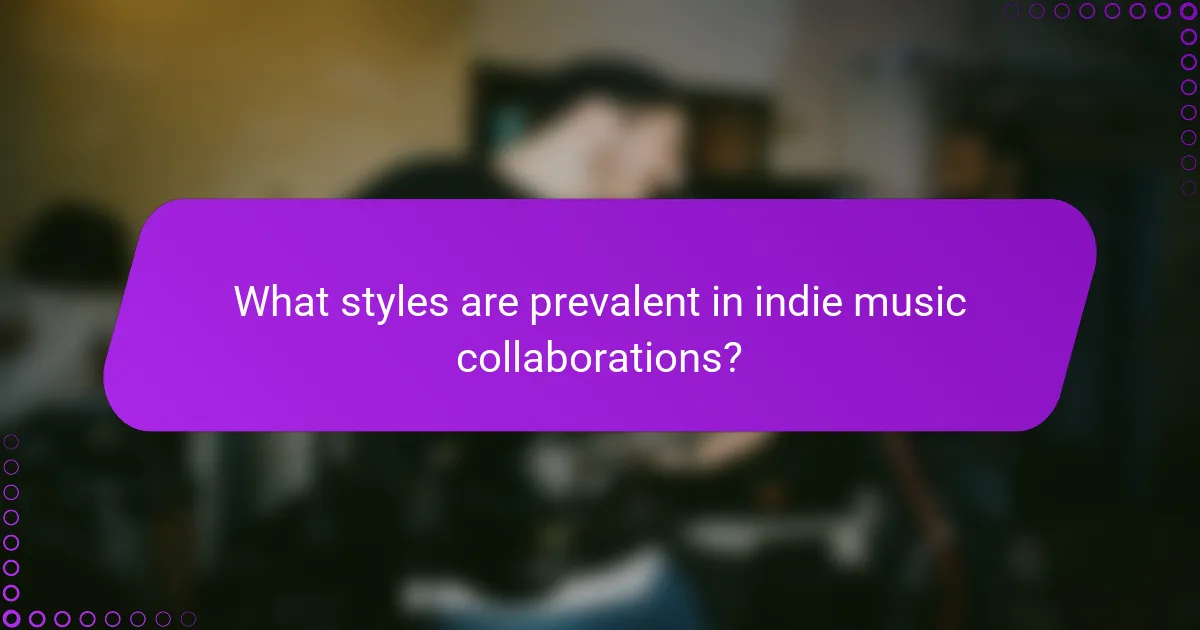
What styles are prevalent in indie music collaborations?
Indie music collaborations often feature diverse styles that blend genres and showcase unique artistic expressions. Common styles include folk, rock, electronic, and pop, frequently characterized by experimental sounds and innovative arrangements. Collaborations often result in fresh musical fusions, pushing creative boundaries. Notable partnerships, such as those between artists from different genres, exemplify this trend, enhancing the richness of indie music.
How do acoustic and electronic elements merge in indie collaborations?
Acoustic and electronic elements merge in indie collaborations through innovative soundscapes and genre-blending techniques. Artists often combine live instrumentation with digital production, creating unique sonic textures. This fusion enhances emotional depth and broadens audience appeal. Notable examples include collaborations like Sufjan Stevens and Angelo De Augustine, showcasing how diverse styles can coexist harmoniously. The outcome is often a richer musical experience that challenges traditional boundaries.
What role does lyrical content play in collaborative projects?
Lyrical content is crucial in collaborative projects as it shapes the narrative and emotional tone. Collaborations often blend diverse styles, leading to unique lyrical expressions that resonate with broader audiences. For instance, when artists from different genres collaborate, they can create lyrics that reflect varied perspectives, enhancing the overall impact of the music. This fusion can result in innovative storytelling, making the collaboration memorable and distinct. Additionally, the lyrical synergy between artists can foster deeper connections with listeners, amplifying the project’s success.
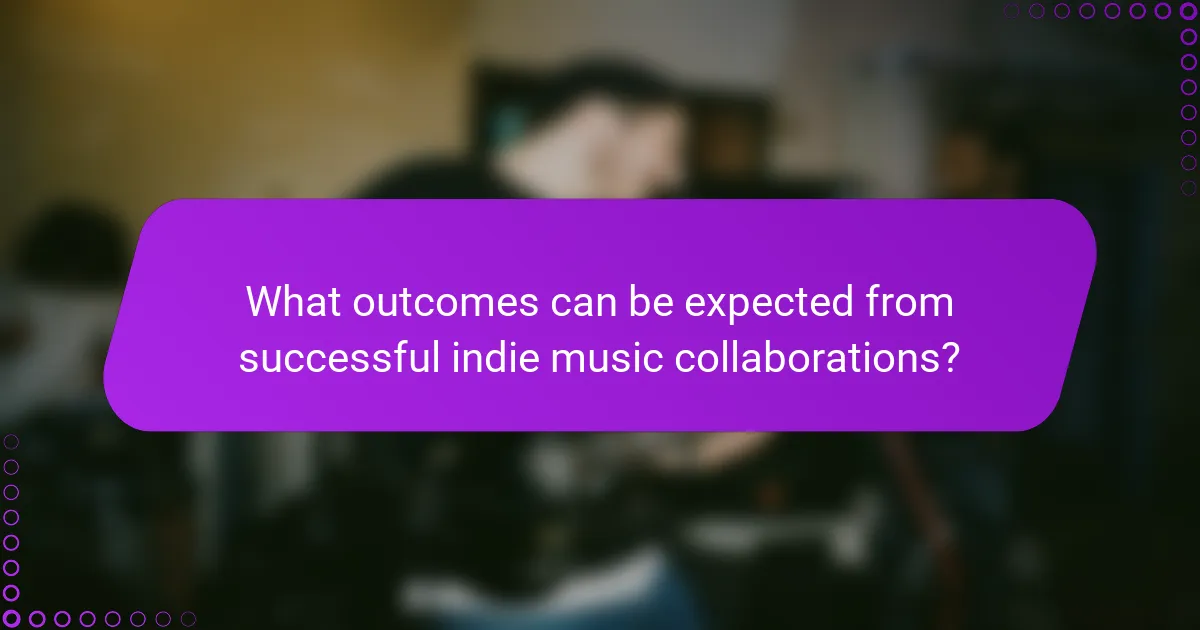
What outcomes can be expected from successful indie music collaborations?
Successful indie music collaborations can lead to enhanced creativity, increased audience reach, and unique sound development. Collaborations often merge diverse styles, resulting in innovative music that appeals to broader demographics. Notable partnerships, such as those between artists from different genres, can yield distinctive tracks that stand out in the indie scene. Additionally, collaborations can provide mutual promotional opportunities, allowing artists to tap into each other’s fan bases and expand their market presence.
How do collaborations influence audience reach and engagement?
Collaborations significantly enhance audience reach and engagement in indie music. They combine fan bases, introduce new styles, and create buzz around releases. Notable partnerships, such as those between artists like Sufjan Stevens and Angelo De Augustine, showcase unique sounds that attract diverse listeners. As a result, these collaborations often lead to increased streaming numbers and social media interactions, amplifying the artists’ visibility in a competitive market.
What are the benefits of cross-genre collaborations in indie music?
Cross-genre collaborations in indie music enhance creativity, broaden audience reach, and foster innovation. These partnerships allow artists to merge distinct sounds, leading to unique musical experiences. For instance, blending folk with electronic elements creates fresh genres and attracts diverse listeners. Collaborations can also provide access to new resources and promotional channels, increasing visibility for all involved artists. As a result, these partnerships can lead to greater commercial success and artistic growth.
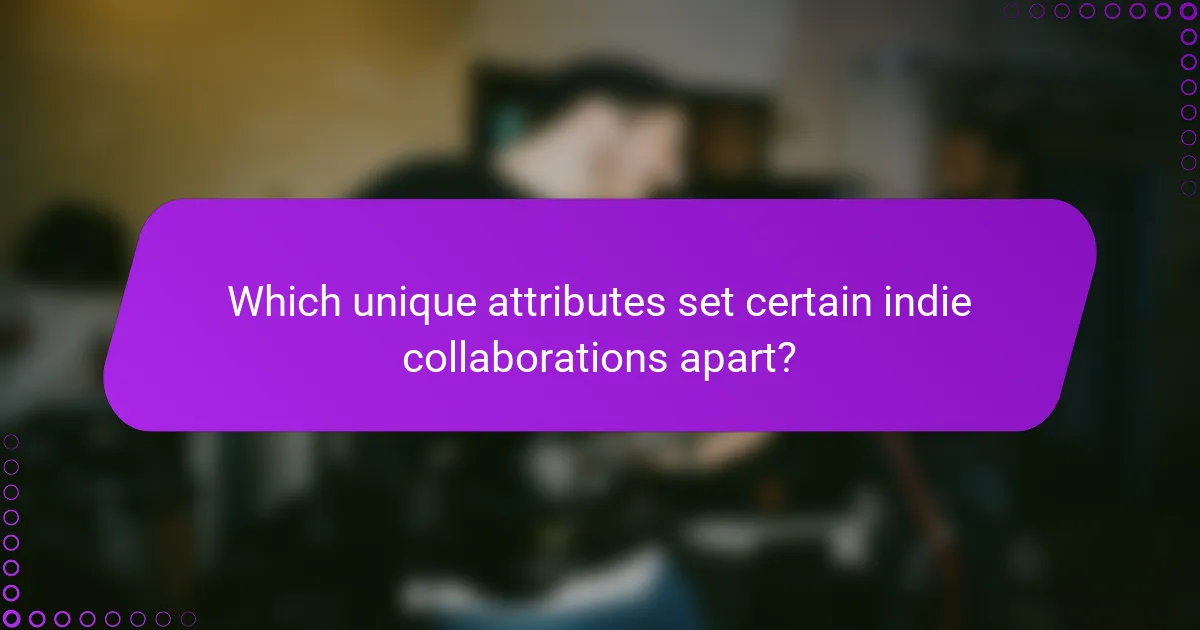
Which unique attributes set certain indie collaborations apart?
Unique attributes that set certain indie collaborations apart include innovative genre-blending, distinctive vocal harmonies, and unconventional songwriting techniques. These elements result in fresh sounds and engaging narratives. Collaborations often showcase artists’ individual styles, creating unique sonic identities. For example, partnerships that merge folk with electronic music can produce unexpected auditory experiences.
What makes the collaboration between Sufjan Stevens and Angelo De Augustine distinctive?
The collaboration between Sufjan Stevens and Angelo De Augustine is distinctive due to their unique blend of introspective lyrics and ethereal soundscapes. This partnership showcases a rare attribute of emotional depth combined with intricate melodies, resulting in a rich auditory experience. Their work reflects a seamless integration of Stevens’ orchestral influences and De Augustine’s folk roots, creating a harmonious balance. This collaboration has produced notable outcomes, including the album “A Beginner’s Mind,” which emphasizes storytelling through music while exploring themes of vulnerability and connection.
How do cultural influences shape unique collaborative sounds?
Cultural influences significantly shape unique collaborative sounds in indie music by blending diverse styles and traditions. Collaborations often merge different cultural backgrounds, creating innovative sounds. For instance, artists from various regions incorporate local instruments and rhythms, enhancing the overall texture of their music. This fusion leads to distinctive genres, such as Afrobeat and folk-rock hybrids. Additionally, cultural narratives and themes enrich the lyrical content, making the collaborations more relatable and impactful. As a result, indie music thrives on this diversity, pushing creative boundaries and appealing to a wider audience.
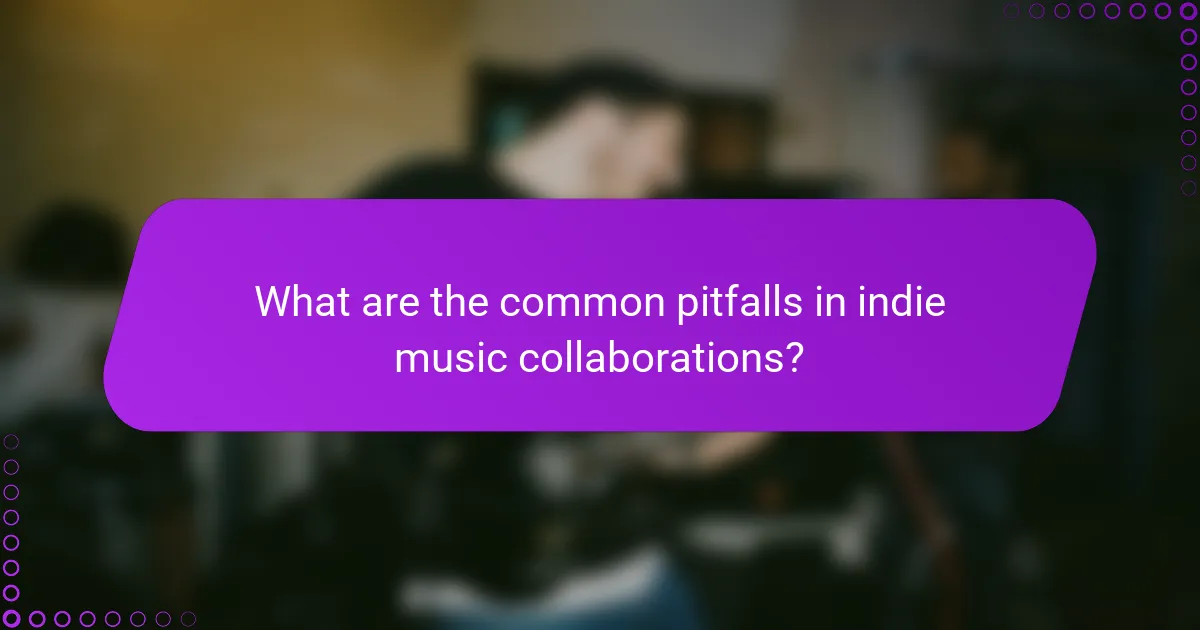
What are the common pitfalls in indie music collaborations?
Indie music collaborations often face pitfalls that can hinder creative synergy. Common issues include miscommunication, differing artistic visions, and unequal contributions. These challenges can lead to frustration and unresolved conflicts among collaborators. Additionally, lack of clear roles and responsibilities may result in disorganization and diminished productivity. Establishing open dialogue and clear expectations can help mitigate these problems.
How can miscommunication affect collaborative projects?
Miscommunication can severely hinder collaborative projects in indie music. It leads to misunderstandings about roles, expectations, and creative visions. For example, unclear communication may result in artists not aligning on musical styles, causing discord in the final product. This misalignment can diminish the unique attributes of each artist, ultimately affecting the project’s quality and reception. As a result, successful collaborations require clear dialogue to ensure all parties share a unified vision and understanding.
What strategies can mitigate conflicts during collaboration?
Effective strategies to mitigate conflicts during indie music collaborations include open communication, setting clear expectations, and establishing mutual respect. Encouraging regular feedback helps address issues early, while flexibility in roles can accommodate creative differences. Documenting agreements fosters accountability and clarity.
What best practices can enhance the success of indie music collaborations?
To enhance the success of indie music collaborations, focus on clear communication, shared goals, and mutual respect. Establishing a strong foundation fosters creativity and productivity.
Building a diverse team can lead to innovative sounds. Collaborators with varied backgrounds contribute unique perspectives, enriching the final product.
Regular feedback sessions are crucial. They ensure that all parties remain aligned and can address any issues promptly.
Finally, leveraging social media for promotion can amplify reach. Engaging with audiences helps build a loyal fan base and increases visibility for all collaborators involved.
